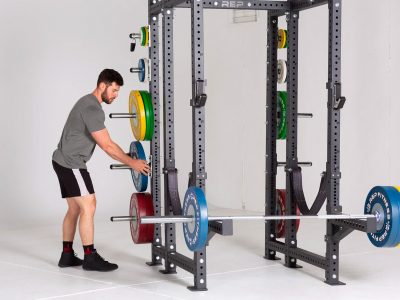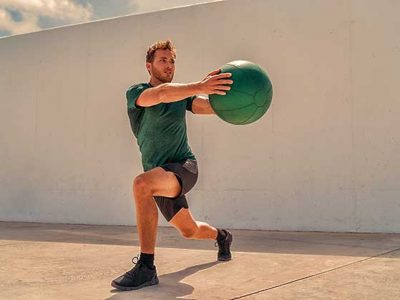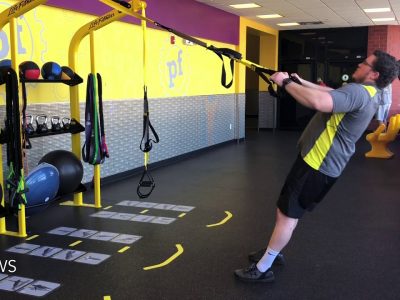Ever wondered how accurate the calorie count on your treadmill really is?
In this blog post, we’ll delve into the world of treadmill calorie counters, decode their accuracy, and suggest ways to improve these predictions.
Bạn đang xem: How Accurate Are Treadmill Calories Updated 07/2024
Ready for a run towards truth? Let’s get started.
The Accuracy of Treadmill Calorie Counters
Lack of research specifically on treadmill calorie counts
Despite the popularity of treadmills in fitness routines, there’s not a wealth of specific research conducted on treadmill calorie counts.
This dearth prevents us from gaining an accurate and universal understanding of just how precise these onboard monitors are.
However, certain studies have been done on exercise machines as a whole which provide some insight. Treadmill calorie counters rely heavily on Metabolic Equivalents (METs) for their calculations—a measure that one study found could potentially overestimate energy expenditure by up to 20%.
While this presents a significant margin for error, it doesn’t mean you should entirely dismiss your treadmill’s calculator function.
Taking into account individual factors such body weight before starting can improve its accuracy considerably.
Studies on exercise machines
While many fitness enthusiasts rely on the calorie counters on their workout machines, research has shown that the accuracy of these metrics can vary.
Here’s a look at some of the studies conducted on the accuracy of calorie counters on various exercise machines.
| Study | Machine | Findings |
|---|---|---|
| A 2005 study | Treadmill | Calories can be overestimated by up to 20% based on METs (Metabolic Equivalents). |
| General consensus among health experts | Treadmill and stair steppers | Treadmills and stair steppers are typically 10 to 15% off in calorie counts than other cardio machines. |
| Government standards | Treadmill | Treadmill calorie counters are considered accurate enough for government use if users input their weight prior to working out. |
Adjusting for factors such as weight, fitness level, and body composition can help improve the accuracy of calorie counts on treadmills.
For example, the calorie counter on a treadmill is more reliable if users input their weight, as it helps tailor the calculations to their individual body.
While not 100% accurate, treadmill calorie counters are generally seen as pretty accurate, especially if users follow proper usage guidelines.
Various related searches people have about the accuracy of treadmill calories include treadmill calorie calculators and the accuracy of calorie counters on watches.
Factors That Impact Treadmill Calorie Count Accuracy
User input
To improve the accuracy of treadmill calorie counts, it’s essential to consider user input such as weight, height, and age.
These factors play a significant role in determining an individual’s metabolic rate and energy expenditure during exercise.
Xem thêm : How Many Calories Does Kettlebell Swings Burn Updated 07/2024
By inputting this information into the treadmill’s settings, users can ensure that the calorie counter provides a more precise estimation of their calories burned.
Research suggests that when users accurately enter their weight before starting a workout, treadmill calorie counters become more reliable in tailoring calculations to each person’s unique body composition.
So next time you hop on the treadmill, be sure to take a moment to adjust these settings for a more accurate assessment of your calorie burn.
Pace and intensity
The pace and intensity at which you run or walk on a treadmill can greatly impact the accuracy of its calorie count.
When you increase your speed and push yourself to a higher intensity, your body burns more calories.
This means that if you go faster or increase the incline on the treadmill, you’ll likely burn more calories than what the machine displays.
On the other hand, if you slow down or reduce the intensity, the calorie count may be overestimated.
So it’s important to remember that while the treadmill’s calorie counter can provide a general estimate, it doesn’t always account for changes in pace and intensity during your workout.
Incline settings
Incline settings on a treadmill play a significant role in the accuracy of calorie counts. When you increase the incline, your body works harder to overcome gravity and burn more calories.
Studies have shown that even slight changes in incline can significantly impact calorie expenditure during a workout.
Adjusting the incline setting on a treadmill not only adds intensity to your workout but also boosts the accuracy of the calorie count displayed on the machine.
So next time you hop on a treadmill, don’t forget to take advantage of this feature and maximize your calorie-burning potential!
Other Methods to Measure Calorie Burn on Treadmills
Wearable fitness trackers
Wearable fitness trackers have become increasingly popular for monitoring calorie burn during workouts, including treadmill sessions.
These devices provide a convenient way to track your activity and estimate the number of calories burned.
Research has shown that wearable fitness trackers can be more accurate than the built-in calorie counters on treadmills.
They use advanced algorithms and sensor technology to monitor your heart rate, movement patterns, and other factors that contribute to calorie expenditure.
Xem thêm : Why Do I Pee When I Jump Rope Updated 07/2024
By wearing a fitness tracker while using a treadmill, you can get a more precise measurement of your calorie burn and better understand the impact of your workout on your overall fitness goals.
Rating of perceived exertion scale
One method that can be used to estimate calorie burn on a treadmill is the rating of perceived exertion scale.
This scale measures how hard you feel you are working during your workout. It takes into account factors such as your breathing, heart rate, and muscle fatigue.
By monitoring your perceived exertion, you can get an idea of the intensity of your workout and potentially adjust it to reach your desired calorie burn.
Keep in mind that this method may not provide precise accuracy like wearable fitness trackers or heart rate monitors, but it can still be a useful tool in estimating calorie expenditure during treadmill workouts.
According to experts, combining the rating of perceived exertion scale with other factors like user input (weight), pace and intensity, and incline settings can help improve the overall accuracy of treadmill calorie counts.
Remember that while the treadmill’s built-in calorie counter may not provide 100% accurate results, it is considered reliable enough if users input their weight before starting their workout.
Target heart rate
To maximize the accuracy of calorie burn measurements on a treadmill, one effective method is to track your target heart rate.
Target heart rate refers to the ideal range at which your heart should be beating during exercise to achieve optimal fat burning and cardio fitness.
By monitoring your heart rate while working out on a treadmill, you can ensure that you are pushing yourself enough for an effective workout without overexerting yourself.
This helps in obtaining more precise data when it comes to estimating calorie expenditure on the machine.
Tracking your target heart rate can be done through wearable fitness trackers or using the handgrip sensors found on most treadmills themselves.
By aiming for and maintaining an appropriate target heart rate zone throughout your workout, you can enhance the accuracy of calorie burn calculations and make better progress towards achieving your fitness goals.
Conclusion
In conclusion, while treadmill calorie counters may not be 100% accurate, they are still considered reliable enough for most users.
Factors such as user input, pace and intensity, and incline settings can impact the accuracy of calorie counts.
However, by following proper usage guidelines and adjusting for individual factors, treadmill calories can provide a good estimate of your energy expenditure during workouts.
Remember to use other methods like wearable fitness trackers or target heart rate as additional tools for monitoring your progress.
Nguồn: https://usgyms.net
Danh mục: Gym Equipment










